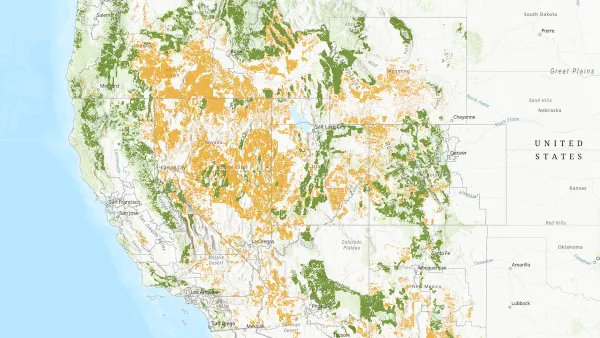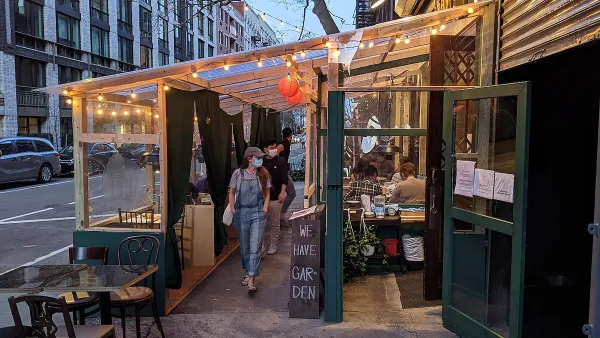New York may be the most famous example of the parks becoming the most conspicuous signifiers of neighborhoods for the haves, versus the have-nots, but Inga Saffron hopes that cities everywhere can find ways to even the playing fields.
Inga Saffron, writing for The New Republic, provides a long commentary on the emergence of private interests as the funding and operations arms for an opulent new era of parks, as most obviously exemplified by a recent proposal by Barry Diller to fund a $130 million Pier 55 park in the Hudson River.
"Given the spectacular green oasis that [project architect Thomas] Heatherwick has conjured up, it may seem petty to look this particular gift horse in the mouth," writes Saffron. "But the billionaire’s island, as some New Yorkers have called the project, is the latest, most extreme example of how big money and business elites are warping the way America’s urban parks are funded, widening the amenities gap between rich and poor neighborhoods."
Saffron goes on to provide a well-detailed history of the crisis in municipal management of parks that emerged as urban centers declined during the 1960s, '70s, and '80s. Following the lead of the independent management scheme exemplified by New York’s Central Park Conservancy, however, "independent park managers are now a major economic development force remaking and gentrifying cities."
The editorial is afforded more space to make its case than it would be if it had been printed in a daily newspaper, and its well worth the read to see the Pulitzer-Prize-winning Saffron detailing the consequences of efforts such as Diller's, which also have examples in cities like Philadelphia, Dallas, and Washington D.C. The article also concludes with a proposal to "avoid a two-tier system of have-and-have-not parks."
FULL STORY: America's Billionaires Are Turning Public Parks Into Playgrounds for the Wealthy

Planetizen Federal Action Tracker
A weekly monitor of how Trump’s orders and actions are impacting planners and planning in America.

Map: Where Senate Republicans Want to Sell Your Public Lands
For public land advocates, the Senate Republicans’ proposal to sell millions of acres of public land in the West is “the biggest fight of their careers.”

Restaurant Patios Were a Pandemic Win — Why Were They so Hard to Keep?
Social distancing requirements and changes in travel patterns prompted cities to pilot new uses for street and sidewalk space. Then it got complicated.

Platform Pilsner: Vancouver Transit Agency Releases... a Beer?
TransLink will receive a portion of every sale of the four-pack.

Toronto Weighs Cheaper Transit, Parking Hikes for Major Events
Special event rates would take effect during large festivals, sports games and concerts to ‘discourage driving, manage congestion and free up space for transit.”

Berlin to Consider Car-Free Zone Larger Than Manhattan
The area bound by the 22-mile Ringbahn would still allow 12 uses of a private automobile per year per person, and several other exemptions.
Urban Design for Planners 1: Software Tools
This six-course series explores essential urban design concepts using open source software and equips planners with the tools they need to participate fully in the urban design process.
Planning for Universal Design
Learn the tools for implementing Universal Design in planning regulations.
Heyer Gruel & Associates PA
JM Goldson LLC
Custer County Colorado
City of Camden Redevelopment Agency
City of Astoria
Transportation Research & Education Center (TREC) at Portland State University
Camden Redevelopment Agency
City of Claremont
Municipality of Princeton (NJ)


























